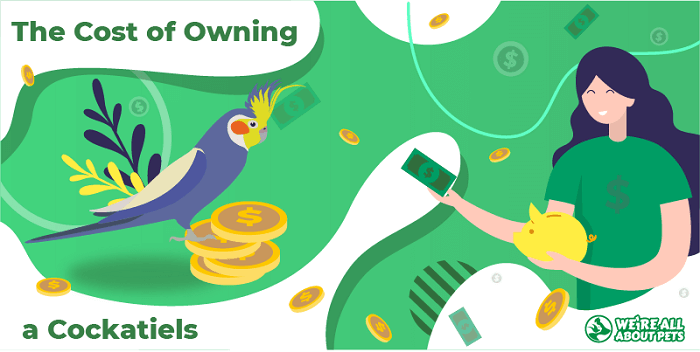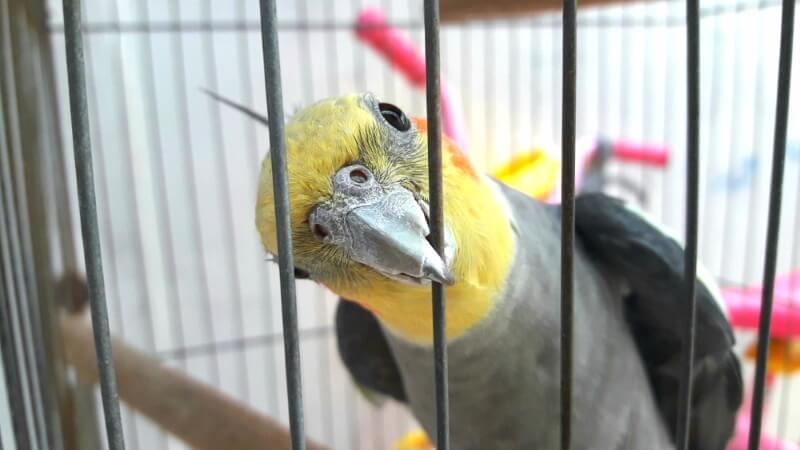All About The Pink Cockatoo – Lifespan, Costs, Temperament And More!
This page contains affiliate links. We may earn money or products from the companies mentioned in this post through our independently chosen links, which earn us a commission. Learn More
Pink cockatoos, also called Major Mitchell’s cockatoos or leadbeater’s cockatoos are a medium sized cockatoo species. These friendly birds are popular for their bold colors: as you might expect, the pink cockatoo have salmon-pink and white feathers. This parrot species has the distinctive cockatoo feature of the head crest that can fan out when the bird is excited or startled.
This marvellous crest is large and a beautiful yellow and red. Their underwings are bright pink and orange so they are very striking to see in flight.
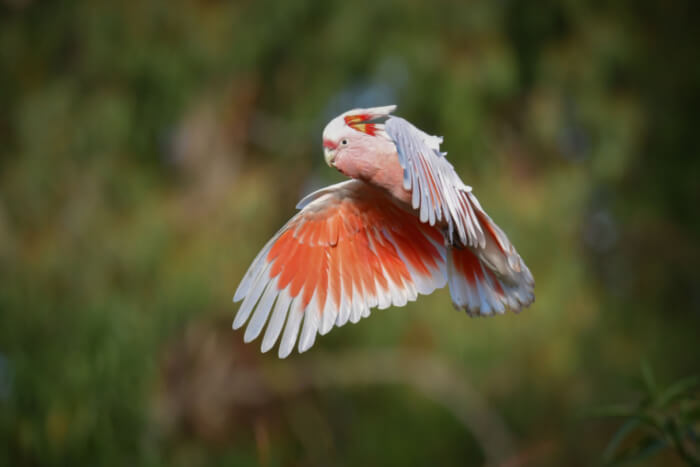
Natural Habitat
The Major Mitchell’s cockatoo is native to Australia. These Australian birds are part of the parrot species and the family Cacatuidae. Their scientific name is Cacatua leadbeateri, with Cacatua mollis as a subspecies. They live in arid and semi-arid regions of Australia, and large populations are found in southern Queensland, northwestern areas of Victoria, as well as along the coast of western Australia. Their conservation status is classified as least concern.
The leadbeater’s cockatoo is a social bird, living in large flocks in the wild. They are often to be found with other cockatoos species such as the galah (rose-breasted cockatoo, or Eolophus roseicapilla) and the sulphur-crested cockatoo. Pink cockatoos look very similar to rose-breasted cockatoos, but the galah cockatoo has more gray coloring, and a white crest. Wild flocks tend to be made up of around 10 – 50 birds.
Diet
Pink cockatoos tend to flock around areas populated with Eucalyptus and Cypress trees. Their diet consists of seeds, nuts and fruits. They have very strong beaks and can crack through nuts and branches to find their preferred insect larvae. Pet cockatoos should be fed a balanced diet, using high quality pellets formulated to meet their nutritional needs, with added fresh fruit and vegetables. Find out more about nutrition here.
Lifespan
These Australian parrots have a long lifespan, not uncommon in a bird species. The Lochophroa leadbeateri can live up to 70 years in captivity, although commonly around 40 – 50 years, so are a big commitment to take on. These parrots are an average size for a cockatoo species, weighing 10-14 ounces and growing to around 13 – 15 inches in length.
Temperament
The pink cockatoo is an excellent companion bird, and a good choice of pet if you’re looking for a lot of interaction. Major Mitchell’s cockatoos are intelligent and love to learn tricks and words, and are affectionate and social with their owners. They need a lot of time and attention, and won’t cope well if left alone without entertainment and social interaction.
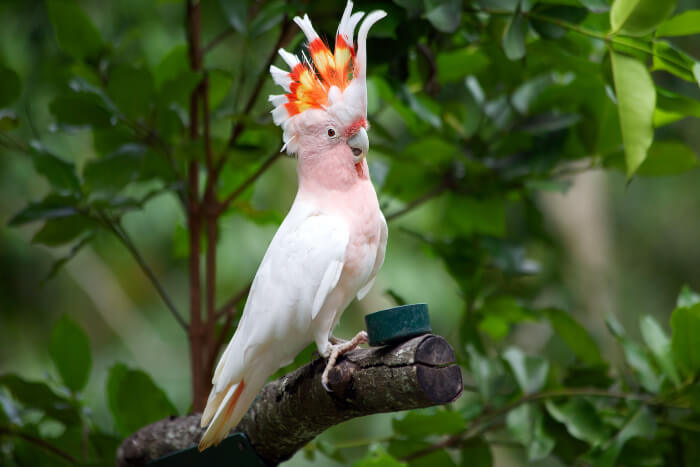
The Costs Of Owning A Cockatoo
Taking on a pet bird is not a light commitment. As well as the time and energy needed to meet their needs, these birds also come with a price tag. Here are some costs to consider.
Adopting Or Buying A Pink Cockatoo
Cockatoos can be expensive amongst the birds of the world, costing anywhere from around $1000 via an adoption center to upwards of $10,000 via a breeder! Some cockatoo species are more pricey than others. The palm cockatoo is rare and hard to breed, and might set you back a whopping $16,000 as the most expensive cockatoo species to purchase. White cockatoos, galah cockatoos and pink cockatoos are more reasonable, but you might still expect to pay around $1000-2000.
Always spend some time researching to find a reputable breeder – ask if you can spend some time with them and their birds to see if they have knowledge and experience with cockatoo species. Check out some U.S. breeders here.
Initial Purchases
There are some essential purchases to consider when you acquire a cockatoo. A spacious cage is needed, as well as perches, toys, water and food dishes and a cage cover. You will need to set aside around $1000 for all this equipment. There are some examples of cages here.
Maintenance Costs
There are some ongoing costs associated with responsible bird ownership. Food is an obvious one, but they may also need to replenish their chew toys and perches. Health costs must also be factored in, such as pet insurance and vet visits. Cockatoos are fairly low maintenance and tend to be healthy, but regular health checks are recommended, as well as some money set aside for any illness or accident. Total annual costs may run to around $400-800.
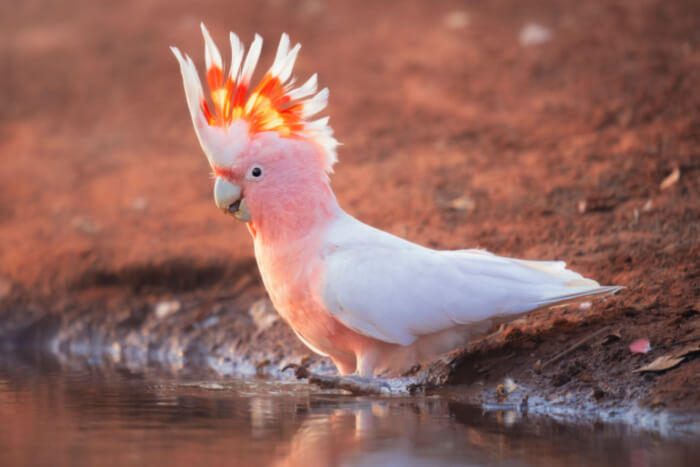
Frequently Asked Questions
How much is a pink cockatoo?
A Major Mitchell’s cockatoo will cost around $1000-2000 via a breeder, perhaps slightly less through an adoption agency.
What kind of cockatoo is pink?
Pink cockatoos have pink and white feathers with a yellow and red crest. Rose-breasted cockatoos are pink and gray.
What is the rarest cockatoo?
The black cockatoo, the palm cockatoo and the yellow-crested cockatoo (the lesser sulphur-crested cockatoo) are some of the rarest cockatoo species. They all have a conservation status of endangered or critically endangered.
How long does a pink cockatoo live?
These Australian birds can live up to around 70 years in captivity, although a common lifespan is around 40-50 years.

